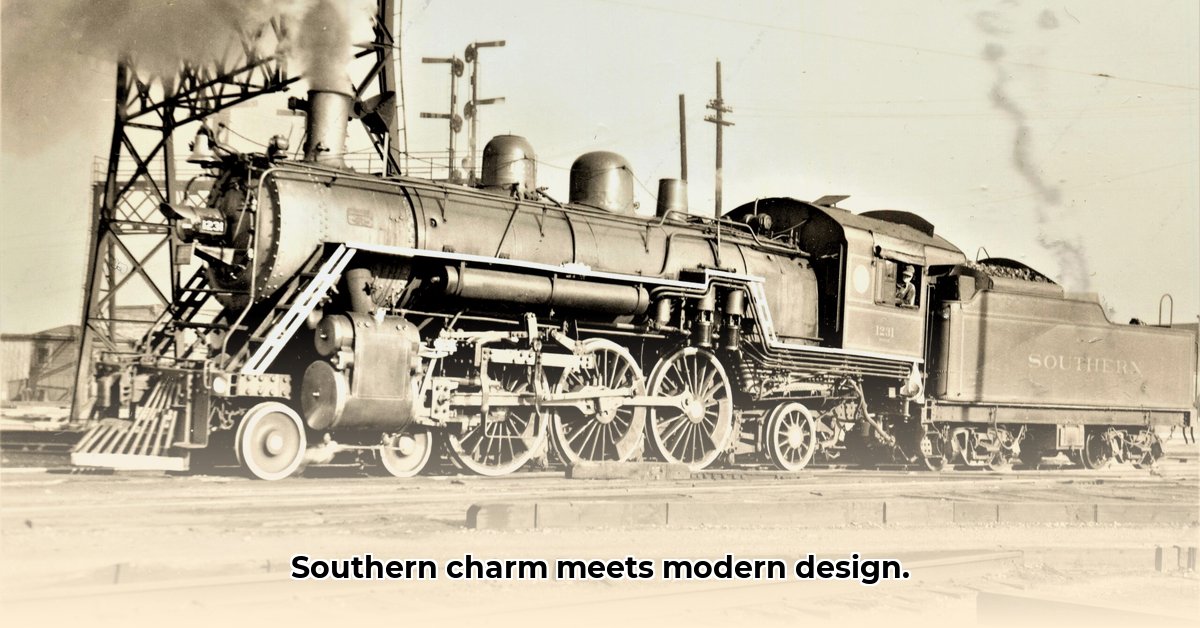Ever been captivated by the architectural grandeur of Southern plantation houses, with their iconic columns and expansive porches? While undeniably beautiful, these homes represent a complex history that demands careful consideration. This article explores the evolution of Southern plantation home layouts, from their historical origins to modern adaptations, addressing both the architectural details and the ethical considerations tied to these spaces. We will explore how to create a modern home inspired by this style, balancing historical appreciation with environmental responsibility. This journey involves celebrating architectural beauty while acknowledging a complicated past. For more inspiration on grand home designs, check out these luxury house plans.
Southern Plantation Home Layout: A Blend of History and Modernity
Southern plantation homes evoke images of elegant columns, sprawling porches, and meticulously manicured lawns. Born in the antebellum South, these grand houses feature symmetrical designs, lofty ceilings, and expansive windows strategically positioned to maximize natural light and ventilation—a necessity before the advent of air conditioning. However, their stunning façade often obscures a complex narrative deeply intertwined with a painful history. How do we reconcile the allure of these homes with the realities of their past?
Let’s examine the architecture. Tall columns supporting wide porches provided shade and regulated interior temperatures. Inside, high ceilings facilitated air circulation. Large, multi-paned windows not only enhanced aesthetics but also provided essential natural light. The symmetrical layout reflected the formal lifestyle of the era, with distinct spaces designed for specific activities, highlighting a rigid social hierarchy. The placement of these homes was strategically planned to maximize sunlight exposure during colder months and minimize it during the summer, optimizing natural climate control.
Understanding these homes requires acknowledging their origins. The opulence of these estates stemmed directly from the brutal system of slavery. The wealth that funded their construction came at an immense human cost. Ignoring this reality would be a grave disservice. Therefore, it’s crucial to remember this darker side while exploring architectural details and considering design approaches. It’s not about erasing history but responsibly engaging with its complexities. The grandeur of these homes cannot be separated from the suffering of those who built and maintained them. Historical accounts reveal that enslaved people were involved in every aspect of plantation construction, from brick-making to carpentry.
Today, architects and builders are reinterpreting these classic designs. New homes often retain exterior characteristics such as graceful columns, expansive porches, and symmetrical beauty. However, interiors undergo modern transformations. Open floor plans connect kitchens, dining, and living areas, creating a contemporary feel. Modern amenities such as spacious mudrooms, upstairs laundries, and ample storage are seamlessly integrated. Energy-efficient windows, improved insulation, and sustainable materials replace older, less efficient building practices. These updates enhance comfort and reduce environmental impact while preserving the architectural essence.
This blend of old and new raises essential questions. How do we honor architectural heritage while recognizing its painful history and incorporating modern comforts? It requires careful consideration. One approach involves transparency. Architects and builders should openly discuss the historical significance of these designs, incorporating educational displays or interpretive materials into new constructions, thus sharing the full story. Transparency fosters understanding. Some museums and historical sites now offer detailed exhibits examining the lives of enslaved people on plantations.
Another key element is community engagement. Working closely with local communities ensures diverse perspectives, addressing potential sensitivities and ensuring designs resonate with those who will experience them. This approach avoids trivializing the historical context. Furthermore, embracing sustainable building practices sends a powerful message. By using eco-friendly materials and prioritizing energy efficiency, we create beautiful homes with a smaller environmental footprint, contrasting the resource-intensive construction of the past. Mandating sustainable methods for all new construction would significantly reduce the overall environmental impact.
Consider these aspects of transformation:
| Feature | Traditional Plantation Style | Modern Adaptation |
|---|---|---|
| Floor Plan | Highly compartmentalized, formal rooms | Open, flowing spaces connecting kitchen, dining, and living areas |
| Kitchen | Often a separate, less prominent room | Heart of the home, often large and centrally located |
| Bathrooms | Smaller, utilitarian spaces | Spacious, spa-like retreats with luxurious fixtures |
| Energy Efficiency | Limited insulation, inefficient windows | High-performance windows, superior insulation, sustainable materials, solar panels |
| Supporting Spaces | Minimal storage, lack of dedicated mudrooms | Ample storage, dedicated mudrooms, large pantries, home offices |
The future of plantation-style home design hinges on responsible adaptation, which involves creating beautiful homes that reflect the past while acknowledging its complexities and meeting contemporary needs. This necessitates careful consideration of historical context, ethical design choices, and the incorporation of modern amenities. It is a conversation still unfolding, but one vital to ensure future designs are both beautiful and ethically sound. The legacy of these homes is multifaceted, demanding designs that reflect this complexity.
How to Ethically Design a Modern Plantation Style Home
Key Takeaways:
- Modern plantation-style homes blend historical aesthetics with contemporary functionality.
- Ethical design necessitates acknowledging the style’s complex history, focusing on its architectural features rather than romanticizing its problematic origins.
- Sustainable materials and energy-efficient technologies are crucial for responsible modern adaptations.
- Open floor plans, updated amenities, and smart home integration enhance livability.
- Careful consideration must be given to the balance between historical accuracy and modern updates.
Understanding the Legacy: A Necessary First Step
Before drafting floor plans, it’s essential to acknowledge the history of plantation homes, inextricably linked to slavery. They were symbols of a brutal system. Therefore, ethically designing a modern plantation-style home begins with understanding this painful past. It’s about learning from it and building something new, respectful, and forward-looking. Appreciate the architectural beauty while fully acknowledging the social injustice that supported their creation, honoring the legacy of the architecture, without perpetuating its problematic past. Historians estimate that nearly all plantation homes in the antebellum South were built using enslaved labor.
Design Elements: Bridging the Past and Present
What defines a plantation home? Symmetrical facades, grand columns, wraparound porches, and expansive windows are timeless classics. The integration of modern upgrades is key, including open-concept floor plans, energy-efficient windows and appliances, and smart-home technology. These elements were unimaginable in the antebellum era. Incorporating these elements is how to ethically design a modern plantation home. Motion-sensor lighting, smart thermostats, and integrated security systems can enhance both comfort and energy efficiency.
Material Choices: Sustainability Matters
Original plantation homes often used locally sourced materials, but the scale reflected a disregard for environmental impact. Today, responsibility is paramount. Choosing sustainable materials is vital, utilizing reclaimed wood, locally sourced stone, and eco-friendly finishes. Emphasis on energy efficiency is necessary. Solar panels, efficient HVAC systems, and high-performance insulation all contribute to a smaller environmental impact. Using sustainable materials can reduce a home’s carbon footprint by up to 30%, according to studies from organizations like the U.S. Green Building Council.
Floor Plans: Balancing History & Modernity
While maintaining the exterior’s classic charm, the interior can embrace modern functionality. Open kitchens seamlessly connecting to dining and living areas create a more inclusive living space. Updated bathrooms and spacious bedrooms enhance comfort. The goal isn’t mimicry, but thoughtful adaptation. Design a home that reflects the spirit of the architectural style, but fits how we live today, not how people lived centuries ago. Interior design choices can reflect both historical aesthetics and contemporary needs through the use of period-appropriate color palettes, historically inspired furniture with modern comfort, and the strategic placement of artwork and decor.
Beyond the Blueprints: Community & Context
The most ethical design considers the community and its context. Integrating a new home seamlessly into its surroundings is key. This might involve using local materials, collaborating with local builders and artisans, and ensuring the design respects existing landscapes, historical landmarks, or environmental concerns. Contributing positively to the community, not imposing a style out of context, is vital. A thoughtful design should incorporate and enhance its unique setting. Landscaping plays a crucial role in integrating a modern plantation home into its environment by utilizing native plants, creating natural drainage systems, and designing outdoor spaces that complement the home’s architecture and the surrounding landscape.
Designing Sustainable and Historically-Sensitive Plantation Homes
Key Takeaways:
- Southern plantation homes blend historical charm with modern functionality.
- Designing sustainable and historically-sensitive plantation homes requires careful planning.
- Modern adaptations prioritize energy efficiency and updated amenities.
- Ethical considerations regarding the style’s history are paramount.
- Budget, site constraints, and building regulations heavily influence design choices.
Understanding the Legacy: A Balancing Act
Building a modern Southern plantation-style home presents a unique challenge. These iconic structures possess undeniable beauty, with symmetrical facades, grand columns, wide porches, and soaring ceilings, yet their history is complex. How do we honor the past while creating sustainable, ethical homes for the future? It’s a delicate balance. This requires a thoughtful integration of historical awareness and modern sustainability principles. Many architecture firms now specialize in historically sensitive and sustainable design, offering expertise in navigating these complexities.
Architectural Elements: Then and Now
Historically, these homes showcased expansive rooms and high ceilings. While stately, this design posed climate control challenges before the advent of air conditioning. Today, designing sustainable and historically-sensitive plantation homes means reimagining these elements. Energy-efficient windows, advanced insulation, and smart climate control all preserve the house’s original character. For example, high-efficiency windows can reduce energy consumption by up to 20%, according to the U.S. Department of Energy and independent studies.
Material Choices
- Contemporary Kitchen Backsplash Ideas for a Stylish Home - December 20, 2025
- Modern Kitchen Backsplash Ideas To Inspire Your Refresh - December 19, 2025
- Modern Backsplash Ideas: A Guide to Todays Kitchen Trends - December 18, 2025










